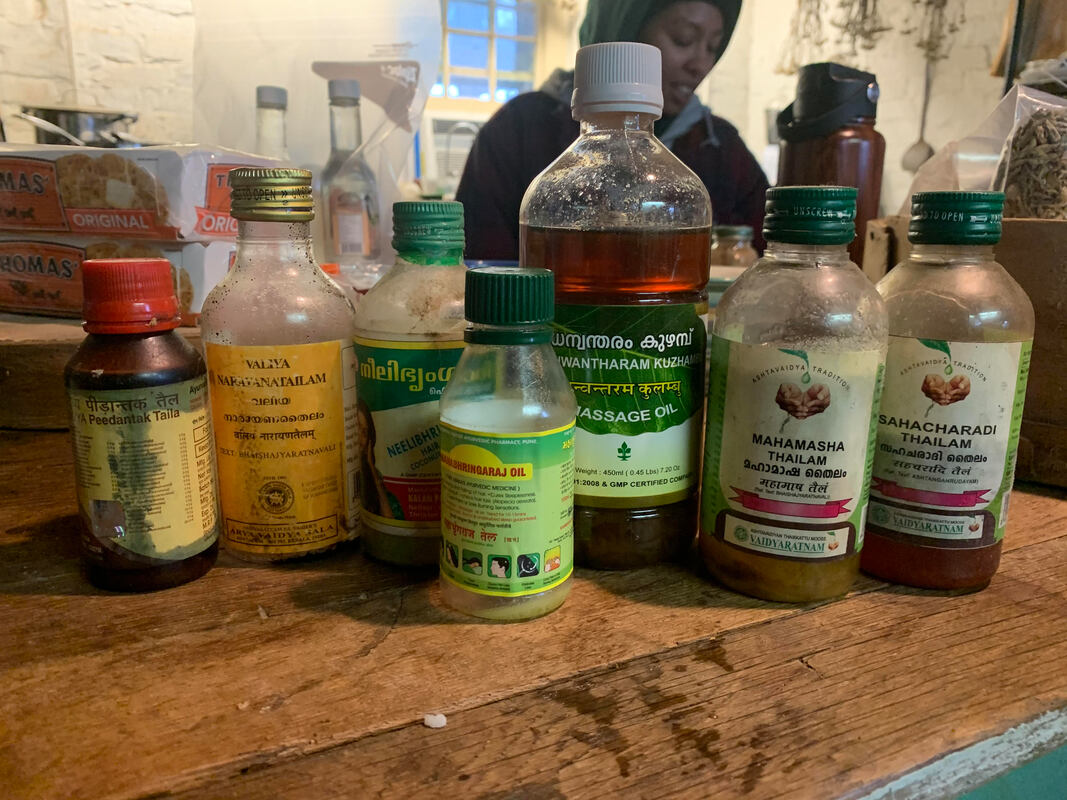 A collection of traditional Ayurvedic oils including Peedantak Tailam, Narayana Tailam, Neelibhrigadi Tailam, Maha Bhringaraj Tailam, Dhanvantaram Kuzhambu, Mahamasha Tailam, and Sahacharadi Tailam. A collection of traditional Ayurvedic oils including Peedantak Tailam, Narayana Tailam, Neelibhrigadi Tailam, Maha Bhringaraj Tailam, Dhanvantaram Kuzhambu, Mahamasha Tailam, and Sahacharadi Tailam. There us a lot of inaccurate information being circulated online in the West about the traditional Ayurvedic practice of Abhyanga, so we wanted to do a post to provide a traditional Ayurvedic perspective of the practice of the healing practice. About Abhyanga Pronounced somewhat like abh-yanga; not abi-yan-ga as it commonly mispronounced in the West. "A" is pronounced like "u" in the word cup. The word has three syllables and rhymes with the Sanskrit word ashtanga. Abhyanga is the name for oil massage in Ayurveda. It is recommended as a part of a person's daily self-care regimen along with bathing, brushing the teeth, exercise, and meditation. It can be practiced at home or by an Ayurvedic doctor as a part of other Ayurvedic treatments. As a part of Ayurvedic treatments, a much greater quantity of oil is used. What Oils to Use Oils recommended by Ayurveda are dosha specific base oils or specially prepared Ayurvedic herbal oils called tailams. The most commonly recommended base oils for the three doshas are sesame oil for vata, coconut oil for pitta, and mustard oil for kapha. A person's doshic balance may be discerned through pulse diagnosis by a qualified Ayurvedic doctor (online dosha tests are quite unreliable). Ayurvedic herbal oils are prepared by well-trained pharmacists, who in India receive over 1000 hours of formal training in the subject of Ayurvedic pharmacology. Base oils (usually sesame oil) are cooked for days along with specially prepared decoctions, herbal juices, herbal pastes and other ingredients according to complex recipes recorded in the Ayurvedic scriptures and often contain greater than 50 ingredients. These oils are somewhat similar to Western herbal infused oils, but they incorporate a much greater quantity of herbs and are hundreds of times more potent. Ayurveda does not tend to recommend essential oils for general use as they are irritating to the skin and agitating to the mind and have a tendency to aggravate both vata and pitta dosha, irrespective of the qualities of the herbs used to distill the oils, because essential oils isolate only the most fragrant and volatile portion of an herb. Many Western companies marketing "Ayurvedic" products have begun to add essential oils to formulas to meet Western expectations, but this is not in line with the traditional recommendations of Ayurveda. The Procedure For at home abhyanga, the recommended amount of oil would be about 1/4th cup to 1/2 cup according to dosha. The most oil is required for vata and the least for kapha. Potent Ayurvedic herbal oils are most often mixed into base oils at a suggested ratio of around 1 part herbal oil to about 5 parts base oil. Specific herbal oils may be used undiluted for the treatment of certain conditions. For daily use for healthy people, it is generally recommended that herbal oils be diluted in a base oil. Before application, the oils should be heated either over a flame or by placing oils in a container in hot water. The temperature of the oil should be different for the three doshas. Oil should be hottest for kapha, very warm for vata, and slightly warmer than body temperature for pitta. Heating the oil helps to ensure that it can be absorbed through the skin to nourish the muscles, tissues, organs and bones. Then the oils is applied all over the head, face and body and rubbed into the skin with rhythmic motions. Pressure should be greater and movements quicker for kapha, with moderate pressure and speed for pitta, and gentle pressure and slow speed for vata. Movements should incorporate long straight strokes along the limbs and back, with circular motions around the joints and belly. Clockwise motions will have a nourishing effect, whereas counter clockwise motions will have a cleansing effect. Motions from the feet upward will have an invigorating effect, whereas motions from the head downward will be grounding. Movements from the extremities toward the heart will be strengthening to the muscles and tissues, whereas motions from the heart toward the extremities will be purifying. The area around the heart is generally bypassed during abhyanga as oil is said to hurt the heart. Special attention is given to the feet which is called padabhyanga and the face and head which is called shiro abhyanga. Rubbing oil into the soles of the feet and the crown of the head is said to have a very calming and grounding effect and to ease stress and promote sound sleep. The process of applying oil should take somewhere between 15 and 30 minutes. After Abhyanga After abhyanga, it is important to take a warm shower to rinse away excess oil and to promote sweating. Sweating helps to release toxins in the skin and blood which otherwise would be trapped in by the oil. Traditionally soap is not used to rinse away excess oil, but herbal dusting powders. These powders often contain grain flours along with herbal powders which have a tendency to clog Western plumbing. In the West, it may be advisable to use soap instead to remove excess oil. It is recommended by Ayurveda to leave a fair amount of oil on the body which protects from wind, sun and extremes of temperature. This does shorten the life of clothing and linens but promotes longevity. Benefits The benefits of abhyanga performed in this way are to increase strength and immunity; soften the skin and to help remove wrinkles and blemishes, ease stress, decrease the effects of aging, promote sound sleep, nourish the organs and tissues, facilitate proper elimination of waste and toxins, improve vision, stimulate circulation, ease pain in the body, and ease mental tension. Contraindications Ahyanga is contraindicated if a person has a cold or fever or is is acutely ill, over growths or rashes or cuts (without advise of an Ayurvedic doctor), when there is indigestion or ama (toxic accumulation), during menstruation or pregnancy, and during certain lunar phases. The subject is vast and it is difficult to cover its many intricacies in a brief writing. We have taught workshops on performing at home abhyanga for health in the past.
0 Comments
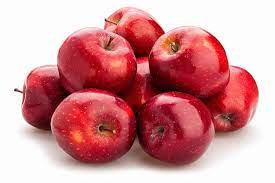 Arctic Fuji Apples Arctic Fuji Apples Modern Market Apples and Patents There are a few genetically modified and patented apples that have recently come onto the market. They are known as "Arctic" apples, and in addition to "Arctic Golden," "Arctic Granny", and "Arctic Fuji" which are now available for sale, other varieties are planned to be sold in the near future. Despite approval by the USDA which states these apples are safe to consume, we do not know the long term health effects or dangers of these or other GMO fruits and vegetables. These GMO's along with the conventionally hybridized but patented "Opal apple" are valued by marketers for their resistance to bruising and browning. Resistance to browning gives sellers more time to be able to profit from the fruits. These and many other popular supermarket varieties of apple have not been grown for their health benefits, nor for their good taste, but for qualities that improve marketability. The apples we see today are not the most flavorful, but have been selected instead for qualities like storing and traveling well, long shelf life, large well-formed, blemish-free fruits, quick growth, resistance to specific pests, and abundant harvests. Here is a link for an article providing more info about these modern varieties which are taking the market by storm. Only a small handful of the many thousands of varieties of apples in existence are widely available today on the US market, and the heirloom varieties are quickly disappearing. The value of biodiversity is being underestimated in favor of profit yields by the big producers. This creates a great potential for disease to destroy food crops. These patented varieties pose an even bigger threat because they cannot be grafted and grown at home by the public, but only by specific farms that who hold the patent or pay the patent holder for growing rights. This discourages growing at homes and small farms and it discourages the allowance of natural genetic variations which have led in the past to many valuable and disease-resistant varieties. Today, though there are many Opal apples sold in markets throughout the US, there is only one 6,000 acre farm in America that holds the legal right to grow these apples. It is extremely important now that we work to save the heirloom varieties before they are lost forever. 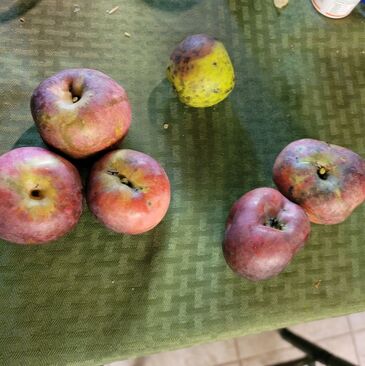 Historic Apples (left to right): "Wolf River," "Goldrush," and "Winesap" Historic Apples (left to right): "Wolf River," "Goldrush," and "Winesap" Historic Apple Varieties The historic apple varieties are not always the prettiest. They are often small, oddly-shaped, with blemishes, and russeting. But they have a wide range of flavors and uses which are lacking in the modern apple varieties. Many heirloom apples were prized in earlier times for specific uses; some for eating fresh, others for making pies and desserts, others for apple sauce, some for apple butter, and many for producing apple cider or cider vinegar. Some apples produced fruit very early in the season and others produced fruit late which could be stored throughout the winter to extend the harvest. They came in an array of colors ranging from almost white to nearly black; yellow, brown, red, orange, pink, and green. Their flavor ranged from cloyingly sweet to very tart, to bitter, astringent, spicy, fragrant, and pungent. A great example of a uniquely valuable apple would be the small unnamed variety we have been working to save from a friend's farmhouse in Bath County for the past few years. This apple has been prized for generations by the locals in the town of Hot Springs for its superlative qualities for making apple butter. The old tree is likely a chance seedling, and may be the only specimen in existence. The old tree is nearing the end of its life cycle and so we have been working to graft it to save its unique genetics for future generations. We encourage others to help save the old, rare apple varieties by growing their own fruit at home like previous generations. Many varieties are much more flavorful than modern supermarket apples, but they are virtually unknown today. The depth of flavor is unfathomable to those who have only tasted modern varieties. Many varieties taste more like apple candy than they do a "red delicious." Several important historic varieties in Virginia that are packed with flavor are "Winesap," "Esopus Spitzenburg," "Ashmede's Kernel," and "Gold Rush" (the parent of Golden Delicious). One flavorful apple stands out in central Virginia for its historic popularity. The "Newton Pippin," from New York grew and sold so well here, it is known in Virginia as the "Albemarle Pippin" for the county where it was grown.  Swamiji in Hot Springs with the Butter Apple we are working to save Swamiji in Hot Springs with the Butter Apple we are working to save In addition to our work to save several old apple varieties, we have been growing and promoting the heirloom varieties. We planted around 54 distinct historic varieties in the orchard at our last farm and we have brought many smaller saplings with us to the new farm. We have helped others to establish small home orchards of heirloom fruit trees. We are excited to have found at the new farm two older non-producing apple trees. With a little love, we should be able to get them producing next year. We are excited to see what rare gems we may have growing here. For the health of the people and the environment, we should promote the older, more natural varieties of food which were grown for their taste and health benefits rather than for their profitability. Preserving biodiversity helps nature to thrive. We should support local growers whenever possible. Small, ethical, local farmers have difficulty to compete with the factory operations using migrant labor and destroying the environment. Many small farms are disappearing today, because they simply cannot compete. When the longtime owner of a major local farm in Hanover County died recently, his children decided it was too little profit and too much work to maintain the farm and they sold the land. It is not always cheaper to seek out locally grown foods sources, but in the long run it does save us money. It is much cheaper than the medical bills incurred from eating unhealthy foods and it saves us the devastating expenses of natural disasters caused by the unsound and unethical practices of factory farming. We plan to compile a list of growers selling historic apples in the future, but for now more information about historic varieties and saplings for sale can be found at these two sources we know and trust: Century Farm Orchard Vintage Virginia Apples Yoga has recently gained great popularity in the West, but along with this have come many instances of misappropriation of the ancient Hindu spiritual practice. The single greatest example of this is arguably the multi-million dollar industry of Western "Yoga apparel." This article shares my perspective about this as a Hindu priest and teacher of traditional Yoga. For me Yoga is not a fashion or an exercise. It is an integral part of my spiritual practice which I regard as sacred. For me, and over a billion Hindus world wide, Yoga is a part of our Religion and it is a mystical practice revealed by our Sages for connecting with the Divine. The contents of this article draw from the spiritual tradition of my Guru and may or may not reflect the thoughts or opinions of other sects or denominations of Hinduism. Though I can not speak for other Hindus, I personally am very happy to see Yoga becoming so popular in the West, but I am concerned that it is changing as it is integrated into Western culture in ways that diminish the potency of the spiritual practice and which are disrespectful and harmful to the Hindu culture which brought Yoga to the world. Especially in the West, Hindus face a certain amount of discrimination and abuse as a minority group. The misappropriation of Yoga contributes to a misunderstanding of Hinduism which is in part responsible for discrimination against Hindu people. I feel it is important as Yoga spreads in the West and inevitably changes its form to suit Western culture, that Western Yoga practitioners learn about the cultural roots and the traditional practices of Yoga so that it is possible to practice Yoga in a way that honors the Indian people and culture which gave birth to the practice.
Undoubtedly, one of the biggest trends in fashion in America today are so-called “Yoga pants.” But have the many people who wear them ever paused to consider if these garments have anything to do with Yoga? As a teacher of traditional Yoga, I can hardly imagine any article of clothing less suitable for the practice of Yoga. In India, where Yoga originated, there is not a multi-million dollar industry around the sale of Yoga attire. People simply wear what clothes they have to practice Yoga. Yet if recommendations for clothing are given in Yoga classes, Indian teachers traditionally suggest to favor comfortable, loose-fitting, light-colored, modest clothing. Yoga practice, pranayama, and meditation encourage the deepening of prana (breath / energy / life-force). As Yoga practice deepens, the pranas deepen and spread into the subtle channels and circulate more completely throughout the body. This process is obstructed by tight, constrictive clothing. Many Yoga postures require flexibility. But flexibility is also hindered by tight clothing, no matter how elastic the fabric. A much more ideal suggestion for Westerners practicing Yoga would be loose, comfortable, white-colored sweatpants. Yoga is a traditionally a silent and introspective practice. “Yoga pants” are a distraction from the inward process of Yoga. Before attempting meditation, Yoga recommends practices of pratyahara (withdrawing the senses from the body and turning them within). Form-fitting apparel is extremely revealing. It encourages oneself and others to focus outwardly on the form of the physical body. But the aim of Yoga is to redirecting awareness from the body and mind, toward the subtle perception of the Soul, which is at one with all of creation. Gradually, practitioners of Yoga learn in meditation to limit awareness of the senses of the body and thoughts and feeling in the mind as awareness expands to experience of the Divinity latent in all things. One common obstacle to this process in public Yoga classes is the natural competitive nature of the mind. Revealing clothing in particular draws awareness to the physical body and encourages students’ tendencies to compare themselves with others, which is a great hindrance to the inner practice of Yoga. Revealing clothing are also inappropriate for Yoga practice because they disregard the Yamas and Niyamas, and Brahmacharya (celibacy for the unmarried or marital fidelity) and Hri (modesty) in particular. Traditional Yoga emphasizes the necessity of practicing certain Yamas (restraints) and Niyamas (observances) before postures, breathing exercises, meditations, or any other techniques of Yoga be attempted. Without these preliminary disciplines, it is said that the practice of Yoga will confer negligible benefits. Many Westerners now view Yoga as a mere physical exercise, which strengthens and tones the body and calms the mind. They have little to no awareness of the traditional application of Yoga, or the true potential of the practice. Yet they take certain aspects of the practice which appeal to their Western sensibilities, removed from their original context, to be applied toward the desires of their egos, though the aim of traditional Yoga is to subjugate egoism. This is disrespectful to the more than 1 billion Hindus, for whom Yoga is an integral part of their spiritual tradition, whether they practice Yoga or not. Much of Western culture seems to advocate admiration of the opposite sex, flirting, dating, and seeking multiple sexual partners in one’s lifetime. Traditional Yoga and Hinduism advise against these practices, advocating the ideals of abstinence for the unmarried or undivided focus of one’s sexual energy upon one partner through the sacred institution of marriage. Yoga is a profoundly mystical practice which teaches that energy which would otherwise feed a person’s spiritual practice can be dissipated through excessive sexual activity or many sexual relationships. When a sensual connection is made with another person, the auras of the couple are connected by an energetic cord which connects the karmas of the couple and through which thoughts, feelings, and energies are sent to one another. Such cords and the energies they facilitate the exchange of are typically very difficult to remove for many years after the physical encounter. One partner may wake up in the morning feeling angry for no apparent reason, until they realize they are noticing the feelings of their past partner, though that partner may be distant. These type of relationships create many karmic bonds also. A person becomes entangled in the karmas of each partner and this can create barriers to health, happiness, and prosperity. A person will tend to become affected by the astrology of each person they open an energetic channel to through physical intimacy. This situation often has detrimental results. Such relationships also tend to detract from the intimate connection which can be achieved in a marriage to one partner. Yoga practices are designed to help release karma and to lessen the thoughts and feelings that burden the mind. Such sensual encounters open a person to many other attachments, thoughts and feelings which must be sorted out through additional practice, possibly in future lifetimes. Marriage on the other hand tends to assist in the spiritual practice of the couple, because both partners are challenged to grow by the difficulties of living together. As they compromise to make the relationship work, true spiritual love deepens, and the karmas of each partner are released. To understand how this relates to “Yoga pants,” we must examine the practice of Hri, or modesty, which is also considered one of the fundamental practices of Yoga. Hri can mean being humble and moderate in the estimation of one’s abilities. It also means dressing in unrevealing clothing and carrying oneself in a manner to avoid the attraction of sexual attention. Men and women in Western society often interact through the lower chakras. Yoga discourages these needless physical and energetic bonds which hinder the process of Yoga. When a person looks at the body of another with desire, they send energy to the aura which can lead to blockages in the flow of prana capable of causing physical and mental health problems. This energetic exchange is known as drishti in Sanskrit, and it implies harmful energies sent to another through glance along with negative emotions (like anger or desire). People in the West are not very aware of subtle energies or the effect they have on them. People in India meditate much more often and have gained more subtle awareness about such things, and people in India interact differently. Men and women traditionally limit interaction with members of the opposite sex to what is absolutely necessary. They do not extend conversations; do not look at one another in the eyes; and they never touch. Unmarried men and women would certainly never be alone with one another. These traditions may seem prudish to Westerners, but they help protect young people from needless energetic and karmic bonds with others and they help to ensure that deep bonds are possible which lead to lasting marriages. They also ensure that people in search of an experience of the infinite do not wind up binding their consciousness in myriad ways to the transient physical body. It is traditional in India for men and women to wear loose-fitting clothing which covers the legs to the ankles. This modest dress is required especially in Temples, Ashrams, and Yoga school in India. Form-fitting or revealing clothing like “Yoga pants” are absolutely prohibited in these sacred places. “Yoga pants” are perhaps the most revealing article of clothing commonly worn in the West, and currently many American schools have banned “Yoga pants” and certain locales have even proposed banning the wearing of “Yoga pants” in public. They tend to encourage men and women to think sexual thoughts, because they are very revealing of the genitalia. Some may try to deny this, but the American Society for Aesthetic Surgery has reported a dramatic recent increase in the number of women receiving labiaplasty, which is linked to a desire to look a certain way when wearing “Yoga pants." Such excessively revealing clothing necessarily leads to sexual thoughts and the exchange of sexual energy. When a person wears “Yoga pants” in the presence of other people, this forces those people to see their genitalia, and this certainly tends to cause other people to think about them and interact with them in a sexual way. It is said that “sex sells,” and the media is inundated with sexual images and suggestions. As a result, nearly every interpersonal exchange in the West is charged with some amount of sexual energy, and “Yoga pants” tend to increase this trend. Perhaps the most accomplished Yogis could look at the human genitalia without having sexual thoughts or being aroused, but it is simply not realistic to expect this level of self-control of every practitioner of Yoga, and certainly not of common people on the streets. Until the instinctive nature of the mind and body has been transmuted through a disciplined and dedicated practice of Yoga, such garments present a needless distraction and obstacle to practice. It is not necessary for interactions between men and women to be so sexualized. It is quite common for men and women in the West to interact with one another through the lower chakras which resonate with lust and desire. Many relationships in the West are based upon lust without regard for the other person involved. It is possible also for people to connect with true love, with compassion, forethought, and sensitivity to the needs and desires of another. Yoga encourages people to connect through the higher chakras, which adore every other person with equal love and respect and which do not harbor selfish expectations or desires. Yoga philosophy does not see anything wrong with sexuality. Its recommendations have been given by the great Yogis without judgement for the purpose of reducing human suffering and helping to lead human consciousness away from the gross material realm and toward the subtler planes of consciousness within. If people truly want to wear “Yoga pants,” I feel they should do so with awareness of the attention it attracts to them. I would ask such people to please not feel slighted if I decline to shower them with such attention. I am striving humbly to interact with people from a place of selfless service, love, respect, and acceptance; and to strive to reserve my lust and desire for my Divine Beloved. This is simply the way I choose to conduct myself, which is my right. I do not ask you to understand, approve of or to assist with my practice. But I do what pleases me, even as you do. I have experienced greater bliss in the awareness of the Divine which permeates all things in the Universe than I have found in any limited or temporary pleasure in this world. As a practitioner of Yoga, I strive each day to dedicate myself more and more each day to the vision of the Divine Light which shines in all things, and I honor the tradition of Yoga which has enabled my experience of this by teaching the profoundly mystical wisdom which it expounds. “Yoga pants” are generally regarded as obscene, inappropriate, and unsightly in India, and are avoided by most. Women from the West are advised by authorities in India that they should not wear such clothing in India to avoid sexual harassment or assault. In cases when tight leggings are worn by Indians, they are typically accompanied by an extra long top that covers the legs to the knees. A few large Indian cities are beginning to embrace Western fashions and culture, and some Indians are beginning to wear Western style “Yoga pants.” But even the few people who wear them, would never consider wearing these to a Temple or Ashram where Yoga is taught. Would a Western woman wear "Yogas pants" to her own wedding? Probably not, because she wants to look her best. But Yoga is even more special and intimate than a wedding. It is the spiritual process of uniting oneself with the Divine Creator. People tend to wear their Sunday best when they go to church, not their exercise clothes. The same is true in India for the spiritual practice of Yoga. People wear their best new (or clean) Sari or Dhoti when they do practices designed to help them approach their beloved God or Goddess. “Yoga pants” are an outrage and an insult to the values and culture of traditional Yoga and Hinduism. But such garments have been named as “Yogas pants” in a perversion of the bona fide spiritual tradition, in order to mass-market a product which takes advantage of the tendency of West society sexualize women for the gratification of men. This is blatantly disrespectful to the ancient spiritual tradition of Yoga and the many thousands of Hindu people who practice Yoga daily as a means of seeking connection to the divine. It is my humble opinion as a Hindu Priest and a Teacher of Traditional Yoga that, in respect for the spiritual science of Yoga and the great Hindu culture which gave it birth, those who practice Yoga in the West should absolutely stop wearing “Yoga pants.” They are inappropriate for a practitioner of Yoga both when doing their Yoga practice and when living their lives in the world. The practice of Yoga is not limited to a Yoga mat. It permeates every aspect of the practitioner’s life, as life presents many opportunity to deepen the practice. For people who are not practicing Yoga, I am no expert on Western culture or what people should or should not do or wear, so I am not really qualified to comment. Though I can admit it would make my Yoga practice easier if I was not forced to see people wearing Yoga pants every time I leave my home. Not everyone is seeking spiritual awareness. People are seeking many different things in this world, and I am not in a position to be able to comment on what attire best suits the purposes of all people. As a teacher of Yoga, I would say, however, that those who chose to wear these leggings should definitely not call them “Yoga pants.” They have nothing to do with Yoga and to call them such is misleading about the spiritual practice and potentially insulting to true Yoga practitioners and Hindus. We as Yoga practitioners should absolutely boycott any company or facility marketing such clothing as “Yoga apparel.” There is much misunderstanding about Hinduism and Yoga in the West and we should hold companies and organizations responsible for perpetuating such misunderstandings accountable for their actions by denying them our business. Western Yoga teachers and Yoga schools should absolutely prohibit wearing “Yoga pants” in their Yoga classes. What if pants with a revealing opening around the crotch were marketed as “Christian Communion Pants?” Westerners would not disrespect Christianity in this way, so we as Yoga teachers and Yoga practitioner should think about the effect of this name. Call them “leggings,” call them “tights,” call them “work-out pants,” but please do not name them for the sacred tradition of our beloved Sages who have attained enlightenment and revealed for the benefit of humanity the system of Yoga for transcending the body and mind. The by-product of black walnut harvesting is a lot of green hulls which quickly turn brown and then black as they sit. Walnut hulls have been used since ancient times to dye yarn, fabric, clothing, textiles, oriental rugs and many other things. Walnut husks were used in colonial times to create a variety of brown and black shade dyes. Using various mordants (like alum or cream of tartar) can help to deepen the color and vary the hue. We had a couple of pieces of old clothing which were stained or otherwise undesirable, which we have given new life by dyeing with the hulls from the walnuts we are processing. Work here restoring the buildings is hard and dirty and so clothes are quickly stained or worn out. Dyeing cloths is a good way to revive an old shirt, skirt or pair of pants. No need to throw away those old t-shirts or donate to the thrift store, and no need to buy something new. People are very wasteful today, but in older times people took advantage of the plants growing all around to reinvent old outfits and create a new look. We have used walnut for coloring Ayurvedic herbal oils also and believe it is a very useful substance. We are describing the process for those who are interested in natural dyeing and the use of native plants. Step One Black walnuts should be collected in the autumn as they fall from the trees. Quickly collecting the nuts is important to ensure that the nut meat will be fresh and the green hull free from worms and bugs. First the hulls must be removed from the walnuts. This can be done by hitting the nut with a hammer or a stone. Protective gloves should be worn and old clothing which you do not care about. All surfaces and materials used may get permanently stained. The black stain on the hands if glove are not worn may last for several weeks. The nuts in their shells are then rinsed of residual hull and dried for cracking or storing. Stored walnuts should be protected from squirrels who love walnuts and are often seen with black snouts in the autumn around here from their walnut foraging. For making dye, the hulls of about 12 to 16 black walnuts is needed. Step Two Next, the hulls must be crushed or torn into small pieces, ideally the size of peas. These are then placed in a non-reactive pot (like stainless steel or enamel). To this a gallon of water is added and the hulls are boiled for an hour or two. If you do not want to use your walnut hulls immediately, the pieces may be dried and powdered for storing for later use. Remember the importance of wearing gloves or washing the hands frequently during all stages of this process. Step Three Then the hulls are strained from the dark liquid and discarded. The liquid is returned to the pan for dyeing. Step Four Then clothing, yarn or fabric is added to the pot with the liquid and simmered until the desired shade is attained. This may take one or two hours or more depending on the color desired and the fabric. Some fabrics will not readily absorb the dye. We will address this in a future post. Stir the fabrics occasionally as they simmer to help be sure that they stay submerged and that all parts are colored evenly. Simmer until the desired color is attained. It is necessary to color fabrics a little darker than you want the finished color to appear, since some color will be lost in the rinsing stage. Step Five Remove the clothes from the dye liquid and rinse thoroughly in the sink, wringing out all excess liquid until the water runs clear. Then the fabric is hung to dry completely. If rinsing is not thorough enough, the clothes may stain the skin when worn or bleed and stain other clothes when washed. Step Six
Once dry, these clothes should be washed by themselves for the first time. After that, they can be washed with similar colored clothes as one normally does their wash. We are sad to say that we have been a little too late separating our roosters from the chickens. Lack of funds has forced us to begin making the separate enclosure for the roosters later than planned. We have started to get eggs and because the roosters are with the chickens, there is a fair chance that many of them could be fertilized.
We considered the possibility of incubating the eggs and raising our chicken's babies, but because the eggs may remain fertile for many weeks and the great difficulty of raising chicks in the winter, we realized it is not possible. Our 13 chickens could literally make a hundred babies within a few weeks, so this is simply not an option. With limited time, space and money, it is unfortunately beyond the scope of our current ability to care for so many chickens. The egg industry generally kills most of the roosters to control population. With no other options we could figure, we have begun performing funerals for the eggs. Following the Vedic tradition of burying still born children, we are burying the eggs after prayers to Lord Yama to help the souls of the chickens to ascend to the spiritual realm. We are offering prayers to ease pain and for speedy and prosperous reincarnation. Swamiji has offered many prayers to help the souls of aborted children to pass from the physical realm, so it is only natural to offer similar prayers for the unborn chicks. We are sad that it has come to this, but there has been no other option but to allow our baby's babies to perish and to pray for their poor souls. The good news is we have the rooster coop and run almost ready and should have our boys separated within a few days. We plan to continue regular funerals for several weeks until the chance of fertile eggs has past. Then, we are back to the question of what to do with the unfertilized eggs. We do not want to eat the eggs, because they are from flesh which is tamasic (dulling to the mind). We find our meditations are deeper when we abstain from such foods. We also do not want to sell the eggs, because we do not want to make money off our chickens but to set the example of caring for these gentle birds rather than using them for our personal gains. Yet, we must dispose of the eggs somehow and do not want to waste them. We can bury some in the garden to fertilize plants and we could feed some to our puppy. We are still exploring other potential uses for the many eggs we will be getting. We welcome thoughts of uses for eggs, if people have them. So we are on our third lawen mower since we moved. We performed vahana puja which purifies and blesses new vehicles and protects from accidents etc. Perhaps third time is a charm?
Volunteers performing a small Homam in the garden. Homam purifies the atmosphere and helps to pacify negative energies. It aids peace and harmony between people, and increases happiness and prosperity for humanity. It helps to avert wars, famines, disease, and natural disasters. The high number of pests eating our vegetable garden shows us that homam is needed to purify the garden. Rudra Homam, Pancha Shiva Homam and Shakambhari Gayatri Homam was performed in the garden.
Business carried us to the West End yesterday, where we took a break to visit the Tuckahoe plantation. The grounds are open to visitors for a nominal cost. The old house and many historic out buildings are well maintained. The grounds include many formal and informal gardens landscaped with plants that would have been grown in the 18th century. Our efforts to restore our old colonial house keep leading us to beautiful and interesting places. It is always insightful and inspiring for us in our work now to visit historic sites like this. As we have set out to restore the historic buildings on the new property, many questions have arisen about the older building techniques used in the past. Historical buildings present many unique construction challenges and special building materials and techniques are required to repair damage to historic buildings. Whenever design or building questions have arisen, we have visited Williamsburg and asked questions to the historic interpreters there. For answers about building materials and techniques, and for inspiration for finishing touches, decorating, and landscaping, they have provided a wealth of knowledge. Many thanks to the Colonial Williamsburg Foundation and their efforts to spread information about historic living. Without their efforts, our work here would not have been possible. Here are some photos taken during our most recent trip to study historic trim and moldings. |
Soma Matha BlogSharing news, articles, teachings, and events. Archives
September 2023
Categories |
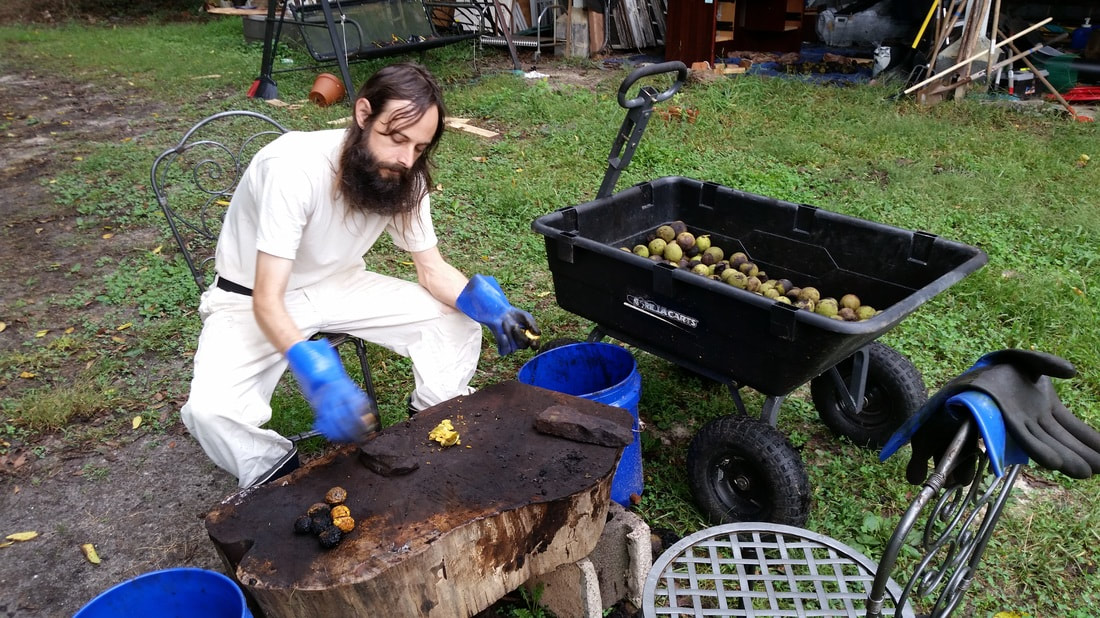
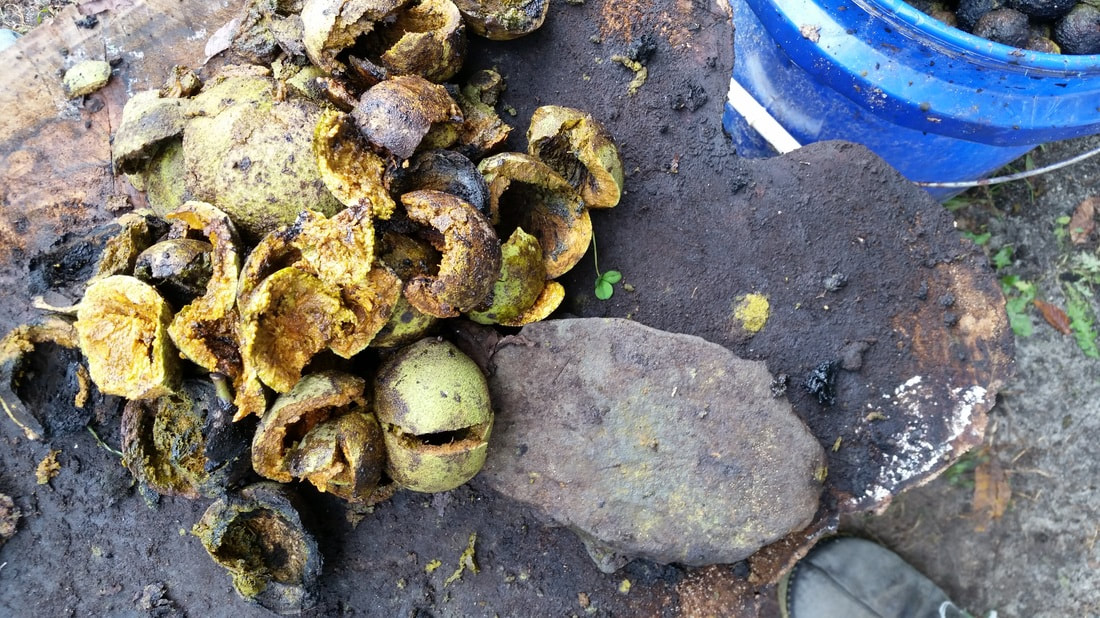
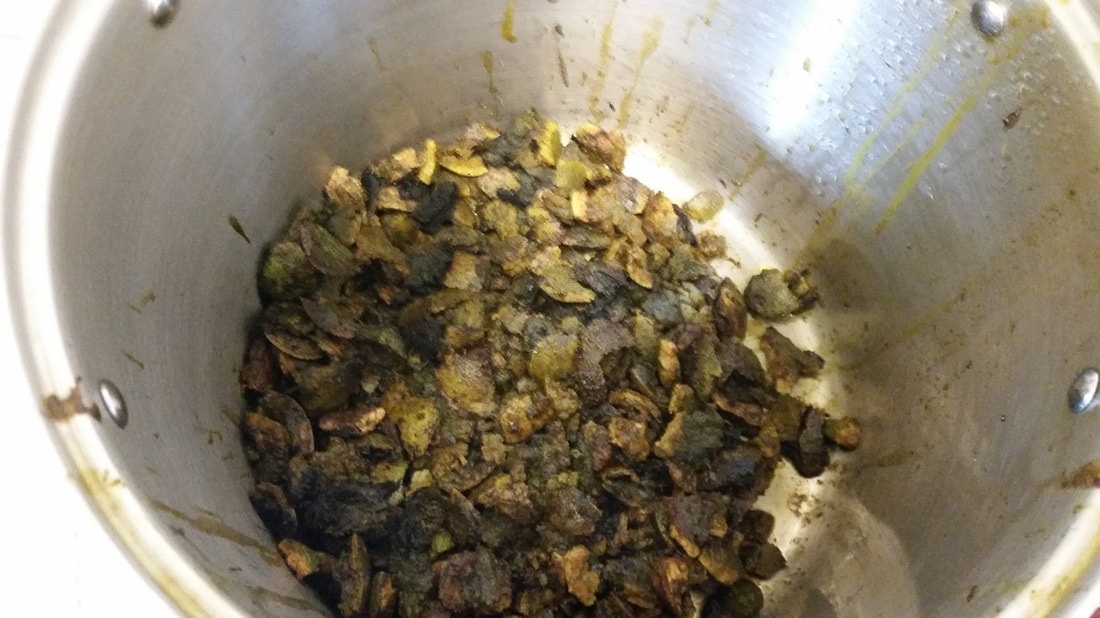
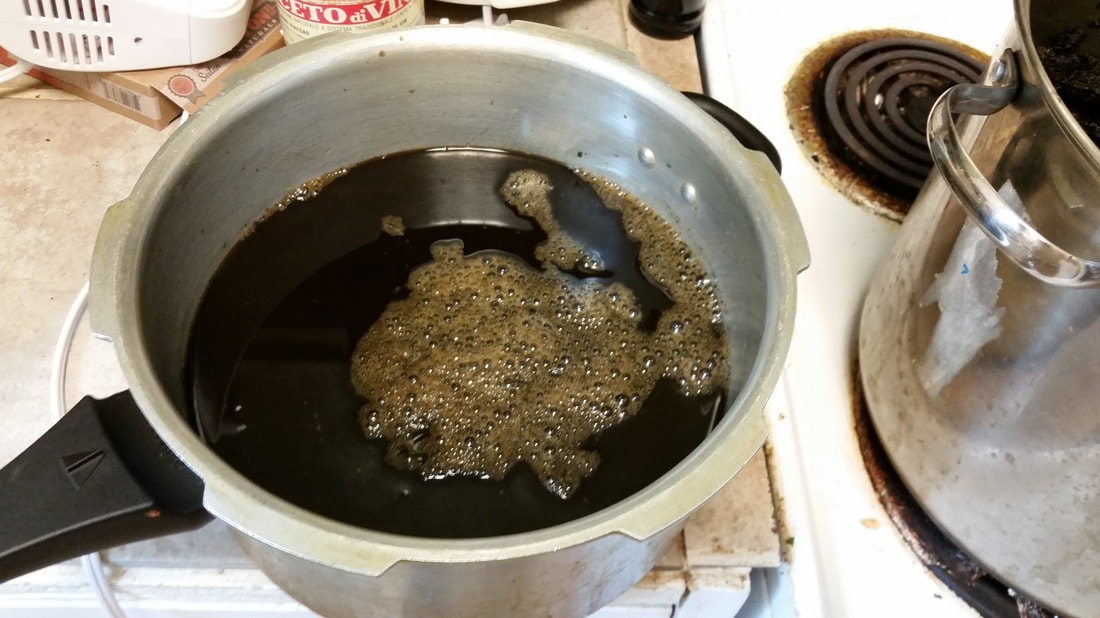
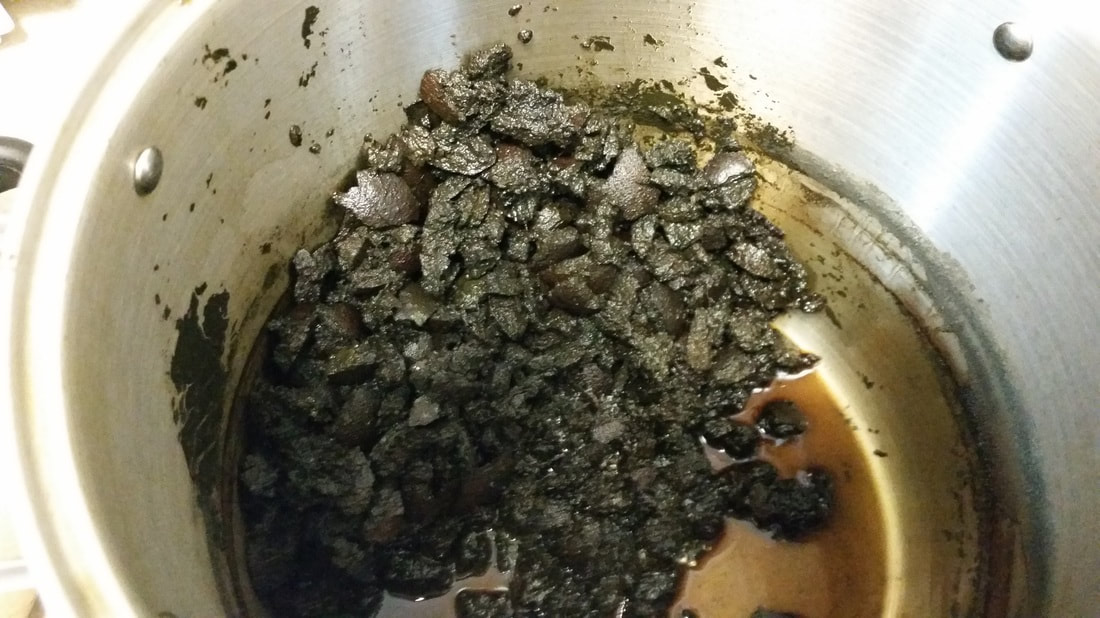
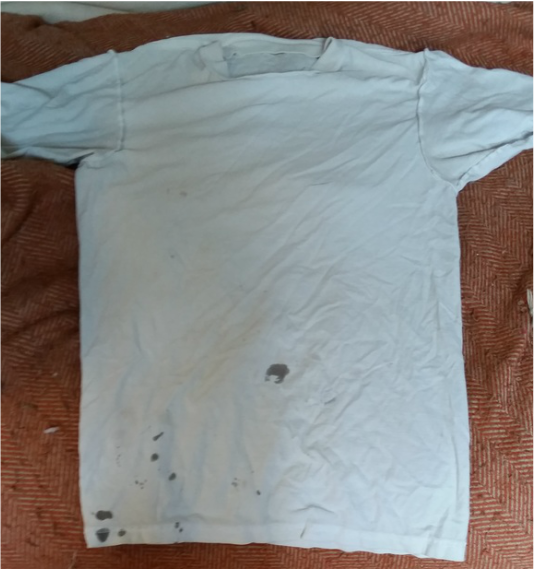
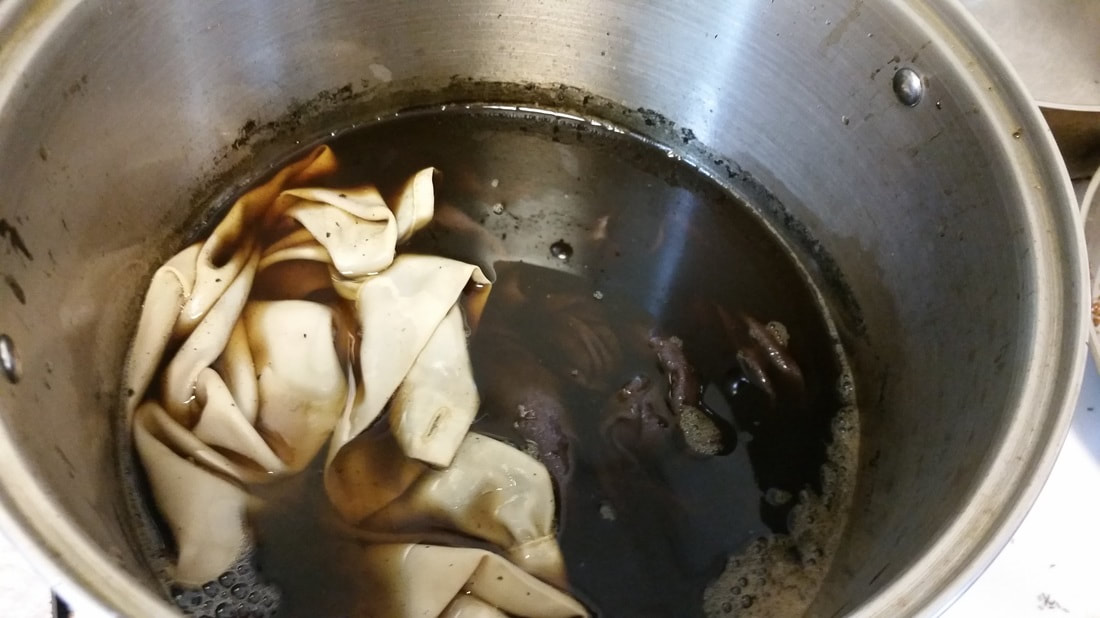
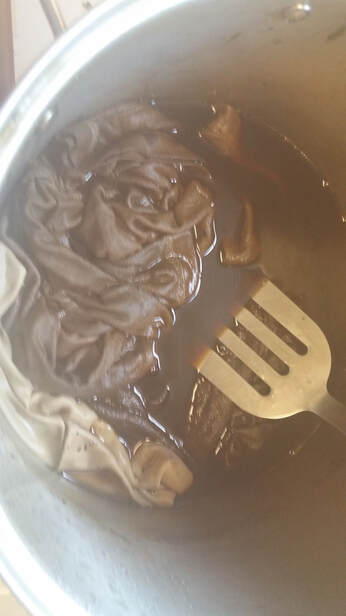



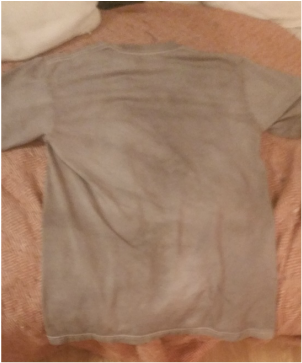
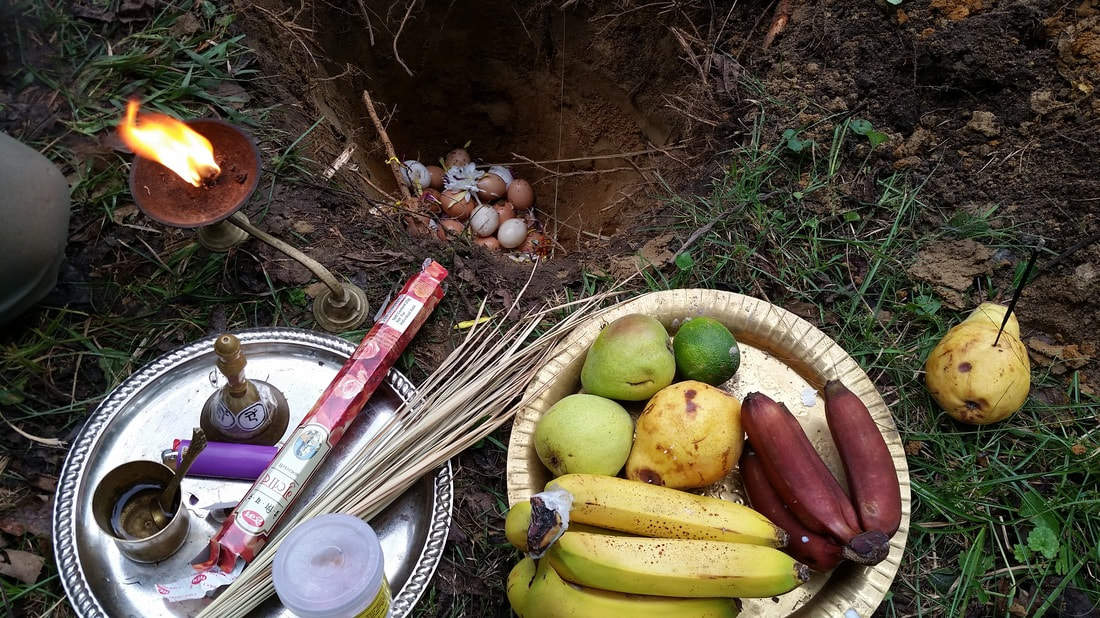


 RSS Feed
RSS Feed